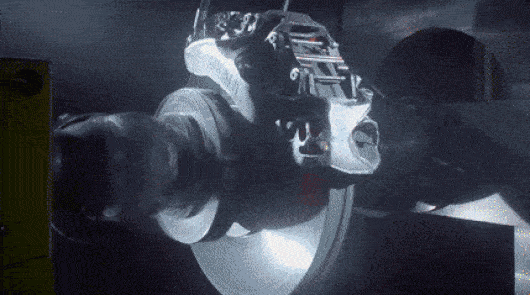Video: see how a Bugatti is testing their 3D printed brake calipers
Not all parts made with 3D printing, definitely made of plastic…

Judging by this video clip, we would say that 3D-printed caliper works pretty damn good!
Let’s face it, printed on a 3D printer brake calipers – the idea of sounding like the worst in the automotive industry. And if we assume that such brakes can be installed on sports cars? There really are no options, the disaster can not be avoided! Or not?
In the beginning of 2018 Bugatti showed the world’s first production 3D printed brake calipers which are designed for use on future models of the manufacturer of the hypercar. Preparing to run the caliper in production, Bugatti has held many serious bench tests that identify not only the top face of the main active safety systems hypercar, but also showed that the element is able to cross any of the traits known valid. It is not surprising that this company creates some of the coolest and high-speed hypercar in the world.
Official YouTube channel of “Volkswagen Group” has posted a video which shows how the engineers of the Bugatti team has tested 3D-printed titanium caliper with incredibly high loads. Laboratory tests imitated so hard stop that could easily heat the hot rotor and pad thick sheaf began to fly sparks.
Pay attention to the load that is comparable to the speeds of 300-350 km/h, after which the car (or rather, its an emulator) dramatically slows down to 100-50 km/h. What is happening with the brake disc, the words to describe the fail. This is a must see in person:
And in General, what all these difficulties with the production of a new caliper?
Actually have things to strive for:
First, titanium 3D-printed vosmitonny brake mechanism is lighter than forged aluminum block from Chiron to 2 pounds.
Secondly, the production of new products faster, despite the fact that the brakes of the new generation for it is made from titanium powder, which is fused with lasers for 45 hours, after which begins a long phase of improvements.
Thirdly, due to the combination of material and special thermal, physical and chemical treatment of the product is given special strength and durability. Yes, you will see for yourself. Video above.
